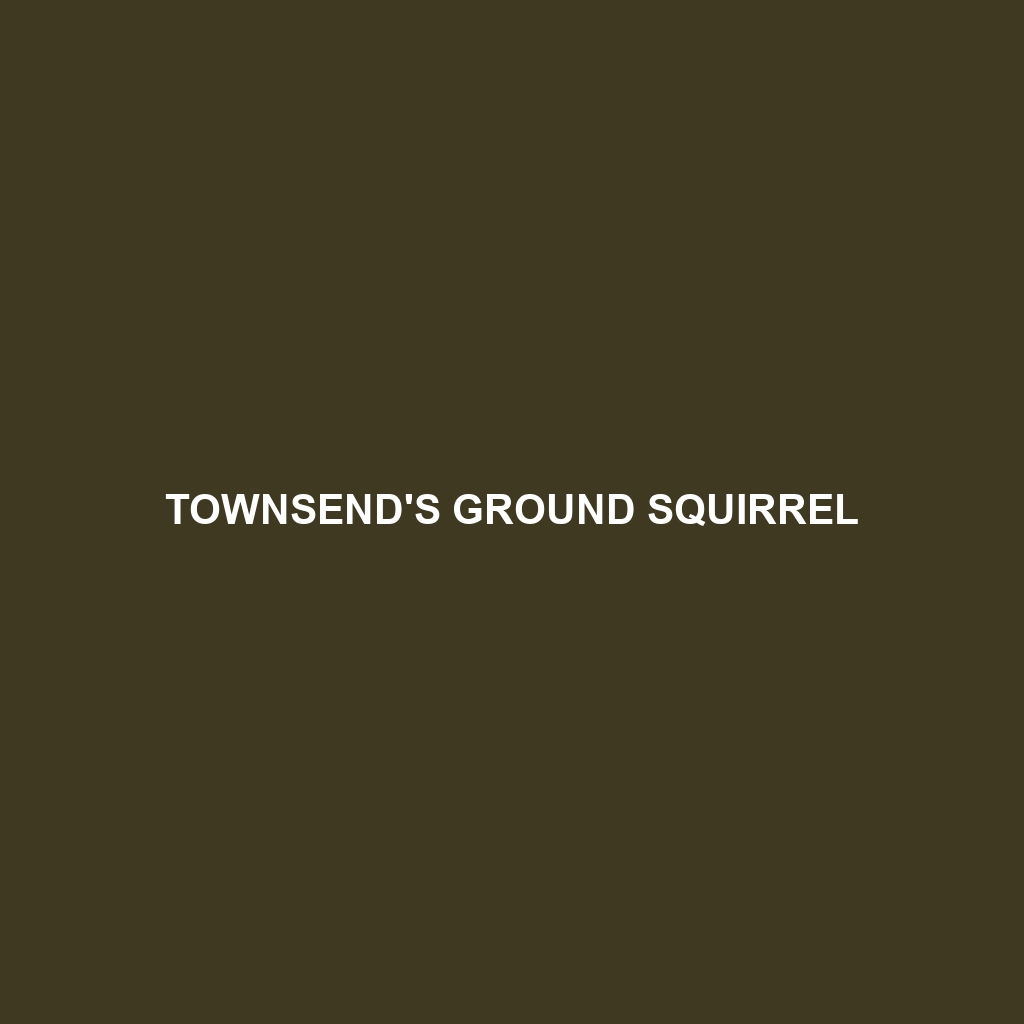Townsend’s Ground Squirrel
Common Name: Townsend’s Ground Squirrel
Scientific Name: Spermophilus townsendii
Habitat
Townsend’s Ground Squirrel primarily inhabits the grasslands and sagebrush environments of the western United States and Canada. Its range includes areas in the Great Basin and Rocky Mountain regions, where it thrives in well-drained soils suitable for burrowing.
Physical Characteristics
This species typically measures between 8 to 12 inches in length, with a bushy tail comprising about one-third of its total size. The pelage is predominantly brown with lighter underparts and distinctive stripes along the back, which help in camouflage against predators. Its small, rounded ears and stout body are notable features.
Behavior
Townsend’s Ground Squirrels are diurnal, becoming active early in the morning and late afternoon. They exhibit social behaviors such as communal burrowing and alarm calling when threats arise. Their burrows can be extensive and serve as both a shelter and a location for food storage.
Diet
The diet of Townsend’s Ground Squirrel includes a variety of grasses, seeds, roots, and herbs. Known for their foraging habits, they often consume flowering plants and are crucial for nutrient recycling within their habitats as they aerate the soil. These squirrels have a significant role in controlling vegetative growth in their ecosystems.
Reproduction
Breeding typically occurs in early spring, shortly after hibernation. Female Townsend’s Ground Squirrels give birth to litters ranging from 4 to 8 offspring after a gestation period of about 30 days. The young are weaned within a month and are often seen foraging with their mothers, learning survival skills.
Conservation Status
Townsend’s Ground Squirrel is currently classified as a species of “Least Concern” by the IUCN, although habitat destruction and fragmentation pose potential threats to local populations. Conservation efforts focus on preserving their grassland habitats to ensure their survival.
Interesting Facts
One fascinating aspect of Townsend’s Ground Squirrels is their unique social structure; they often live in colonies, which can help in defending against predators. Additionally, they have developed communication systems consisting of various vocalizations to alert each other of dangers.
Role in Ecosystem
Townsend’s Ground Squirrels play a vital role in their ecosystem by serving as prey for numerous predators, including hawks, snakes, and foxes. Additionally, their burrowing behavior helps to aerate the soil, aiding plant growth and influencing the local flora and fauna dynamics.
